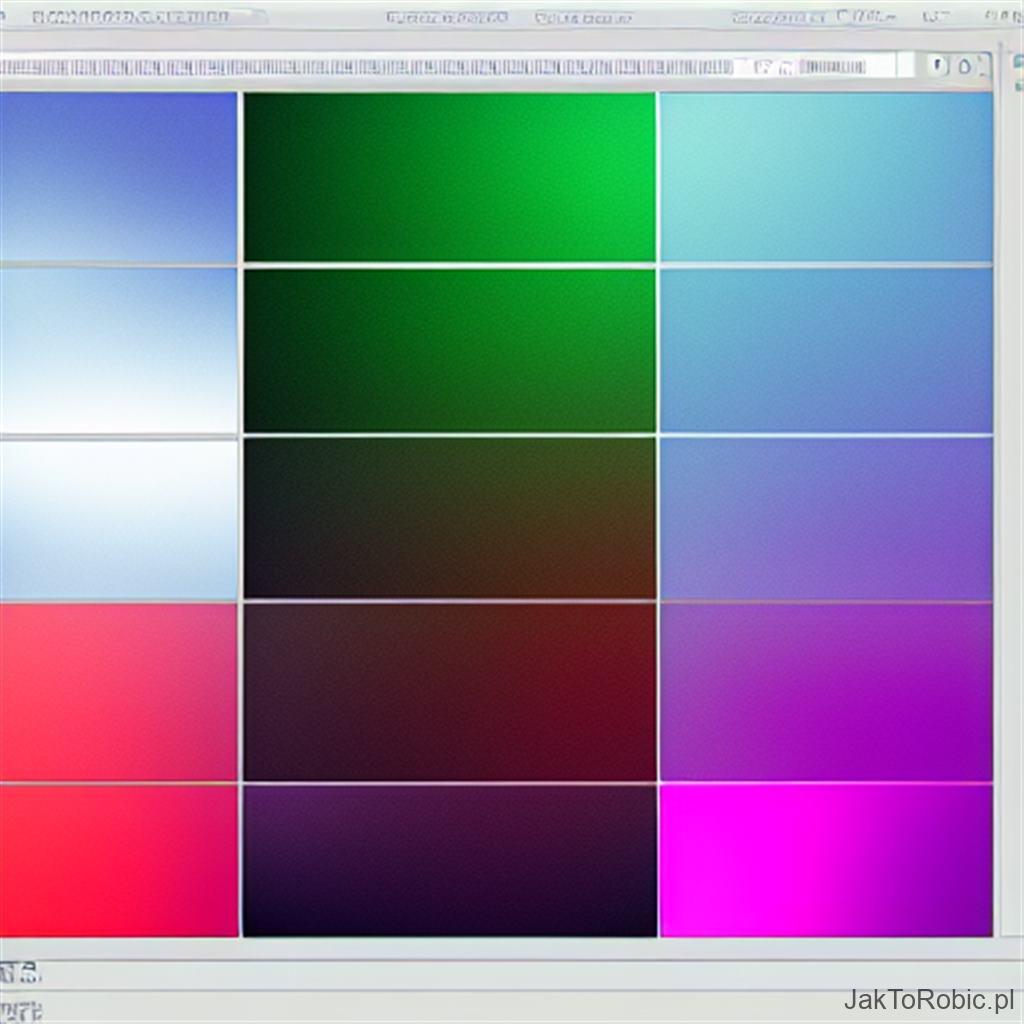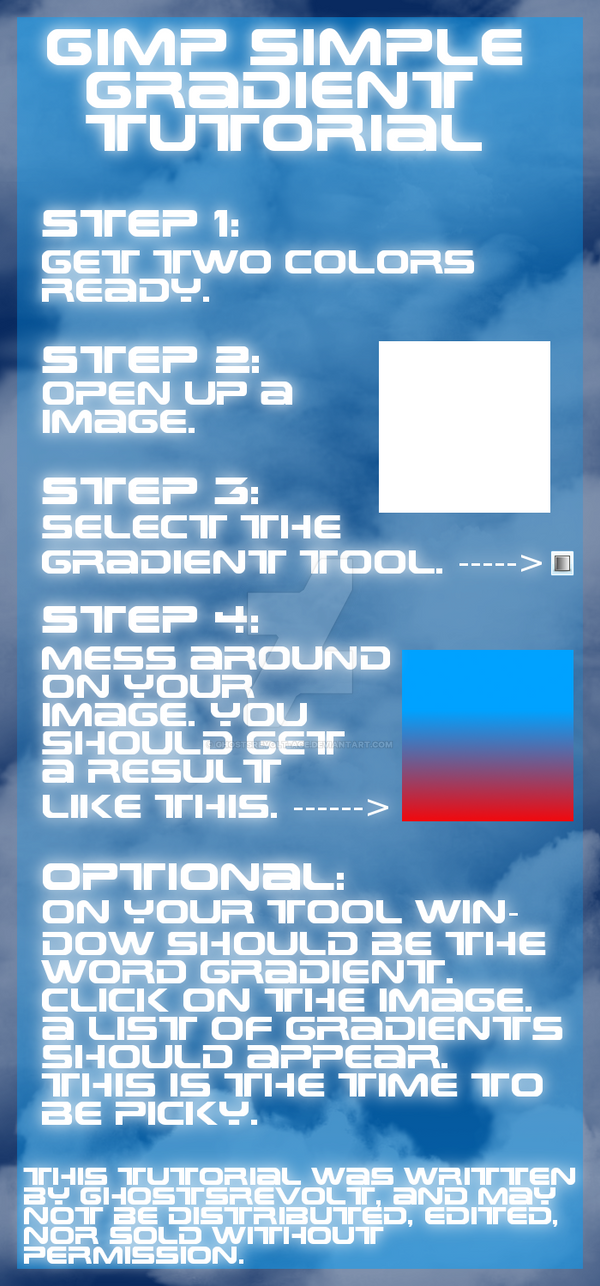
900 gradients for GIMPInkscape by nevit on deviantART Gimp, Paint program, Blend tool
7 7 comments Best Add a Comment 1ko • 4 yr. ago With the Focus Blur filter. you can use another image as map for the blur intensity. Use a black to white gradient on a layer below. Edit: I used to work, but it seems broken in my Gimp 2.10.8 [deleted] • 4 yr. ago
:max_bytes(150000):strip_icc()/001-make-a-custom-gradient-in-gimp-1701680-0e105f16b6534735b411de10d4895a4e.jpg)
Creați un gradient personalizat în GIMP Cumsedeschide Blog
Gradient This tool fills the selected area with a gradient from the foreground and background colors by default, but there are many options. To make a gradient, drag the cursor in the direction you want the gradient to go and you release the mouse button when you feel you have the right position and size of your gradient.

Jak zrobić gradient w Gimp • Jak to Robić
Open up GIMP and the image you want to blur, then find the Layers palette down in the bottom right of the interface. Right-click on the layer name and choose Duplicate Layer, or press Shift + Ctrl + D (use Shift + Command + D on macOS).

How To Do Gradient Full 3d Radial Gradient Background, Gradient, Coral Red There are
To blur an image in GIMP using the Gaussian layer option, follow these steps: Open GIMP. Select an image to blur. From the bottom right, click on the "Layers" palette. Right-click on the layer.

Gimp Blur Background And Foreground With Gradient Tool YouTube
1 Answer Sorted by: 54 Updated for GIMP 2.10: You can put all your layers into a layer group, then add a layer mask to the group, and paint a white-to-black gradient on the mask. Initialize the layer mask to "Black (full transparency)", so that the black part will be transparent.

65 GIMP Gradients Pack » Styles, Стили для Фотошопа
Gimp: How to use the paths tool and blur the background with a gradient. The pen tool clearly explained and how to change the background from sharp to unshar.

How to Make a Gradient in GIMP (3 Easy Steps)
Step 1: Switch to the Gradient tool using the keyboard shortcut G. Step 2: Click and drag in the main image window to define your gradient area. Step 3: Adjust the endpoints (if needed), then switch to any other tool to finalize the gradient. Congrats, you've just made a gradient in GIMP!
:max_bytes(150000):strip_icc()/012-make-a-custom-gradient-in-gimp-1701680-270f119cc13141aa8480898520c83c09.jpg)
Make a Custom Gradient in GIMP
Stanley H Chan and Truong Q Nguyen. 2011. LCD motion blur: modeling, analysis, and algorithm. IEEE Transactions on Image Processing 20, 8 (2011), 2352--2365. Google Scholar Digital Library; Petrik Clarberg, Robert Toth, Jon Hasselgren, Jim Nilsson, and Tomas Akenine-Möller. 2014. AMFS: adaptive multi-frequency shading for future graphics.

How To Make A Simple Gradient Using Gimp 2.8 YouTube
In this GIMP Basics tutorial, I show you how to add a transparent gradient to your image or composition! This is a very easy technique that requires some of.

GIMP Making stuff glow with gaussian blur and gradient overlay YouTube
1 Answer Sorted by: 2 To give an exact answer to the question title one could write: Make a selection and fill it with a gradient. But seemingly you want overpaint too sharp borders to make them smooth; you search a way to use a gradient as an alternative to the blur tool.

How to colour gradient match photos in GIMP Scott Photographics Free Photography, GIMP
1 I would use GIMP's Focus Blur filter. It's not non-destructive, but you can create a layer from visible, and apply it to that layer, leaving your original layers unchanged. Set it up like this. Click to view larger Share Improve this answer

Gimp Gradient Tutorial by GhostsrevoltAce on DeviantArt
In GIMP, you can create a blur effect by using different tools and features of this software, which give you an image with a blurred background without disturbing your main object. Blur out any area in any image totally depends on you, which means you are free to choose which area you want to make blur and which area you want to focus on.
:max_bytes(150000):strip_icc()/015-make-a-custom-gradient-in-gimp-1701680-d51df6e6ad1f49428a5177ea4099a826.jpg)
Make a Custom Gradient in GIMP
What to Know Open editor: Select Windows > Dockable Dialogs > Gradients > right-click in list > select New Gradient. Create gradient: Right-click in preview window > select Left Endpoint's Color > choose color > select OK. Next: Right-click in preview window > select Right Endpoint's Color > choose color > select OK.

. GIMP 2.6 Gradient Tutorial by hellpassion on DeviantArt
techniques are then used to identify the blur and restore the image. However, due to the lack of sufficient knowledge of the blurring process and the ideal image, the developed image blur restoration methods have limited applicability and their computational burden can be quite substantial. Recent advances in CMOS image sensor technology en-

[GIMP] Gradient Map Tutorial YouTube
Paint Tools 3.15. Blur/Sharpen Figure 14.102. Blur/Sharpen tool icon in the Toolbox The Blur/Sharpen tool uses the current brush to locally blur or sharpen your image. Blurring with it can be useful if some element of your image stands out too much, and you would like to soften it.

streamgimpgradient3 mcclanahoochie's blog
The Procedure ¶ Here is the original example image, loaded into GIMP. Step 1 ¶ Open the Layers dialog (if it is not already open, it can be accessed through: Windows → Dockable Dialogs → Layers ). Right-click on the Background layer and select Duplicate (there is also a button for this in the bottom button bar of the Layers dialog ( ). Step 2 ¶